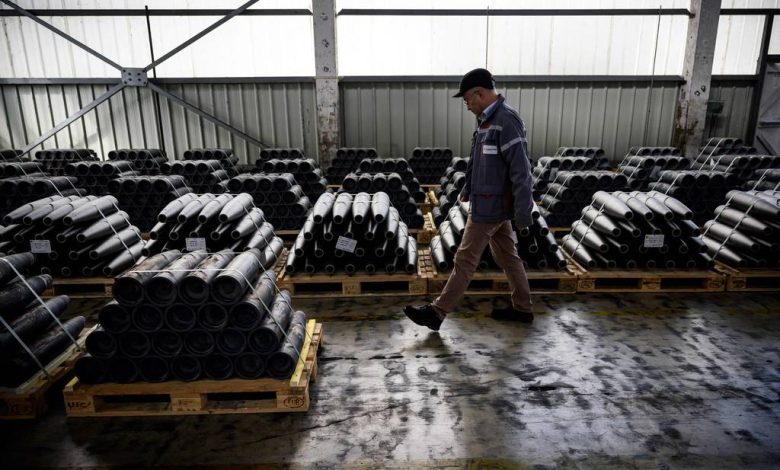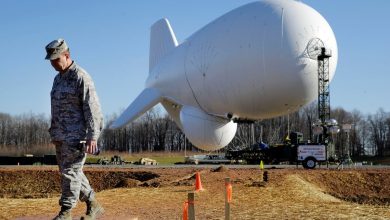With the world on edge, defense stocks soar

About two and a half years ago, the world changed. Geopolitical tension rose in the aftermath of Russia’s full-scale invasion of Ukraine, forcing NATO and European nations to emerge from years of complacency to recognize the threat that remained on their doorstep.
This was followed by the attack by Hamas on an Israeli music and arts festival in October 2023 and the subsequent response by Israel in the Gaza Strip — and so far only minor skirmishes in the region between other players.
And with the Chinese government increasing its military budget by an estimated 6% to $296 billion in 2023, spending by Japan and Taiwan each grew 11%.
The result of these actions has hardened the resolve of nations and brought security front and center to political discussions. In 2023, government spending on defense increased to a record $2.443 trillion for the procurement of military equipment and supplies to combat threats; to support allies; and to bolster border security.
According to the Stockholm International Peace Research Institute think tank, this is the ninth consecutive year of increases, with last year’s gain of 6.8% the highest level ever recorded.
These resources have funneled through to the global corporations that build, maintain, support and sell the weaponry and supplies. In the U.S. alone, defense spending grew from $721.5 billion in fiscal 2020 (before President Joe Biden took office) to a proposed fiscal 2025 national defense budget of about $926.8 billion; a 28.5% increase.
Defense News’ Top 100 list contains 68 publicly traded companies — or at least their parent organizations — that represent about 73% of the list’s total FY23 defense revenues of $603.9 billion. Exclude China’s presence on the list, and the percentage increases to 89%.
RELATED
As one would anticipate, the world’s publicly traded defense stocks have seen their price per share rise higher, producing steady gains over the prior two years. Right or wrong, stock prices are a proxy for the health of the defense sector and of investor confidence.
Since the start of the Russia-Ukraine war, defense stocks have risen by 48%, as defined by the SPADE Defense Index. Assets invested in the sector’s exchange-traded funds are up 268% and now total more than $11 billion, including Invesco’s exchange-traded fund, which has quadrupled its assets during this time.
At the firms themselves, recent quarterly reports from many defense companies, both large and small, show backlogs at historic highs.
Results for the first quarter of 2024 by RTX ($202 billion), Lockheed Martin ($159 billion) and others saw these firms post truly astonishing numbers.
Even Boeing, despite its recent issues with its commercial aircraft and cost overruns on some military programs, maintains a backlog of $529 billion — more than six times its total revenue in FY23.
Ramping up the production volume of an older system is more profitable than the margins for developing new technologies and systems, so defense firms should see a direct translation from reducing their backlogs to increased bottom-line profits.
“The math is simple,” according to Mike Stone, a reporter at Reuters. “For example, to meet demand for missile defenses, production of Patriot interceptors for the U.S. Army — a projectile fired at an incoming missile with the aim of knocking it down — will rise from 550 to 650 rockets per year. At around $4 million each, that’s a potential $400 million annual sales boost on one weapons system alone.”
While sporadic supply chain disruptions and issues related to hiring additional staff remain, firms are working to increase production capacity for the weapons systems and equipment required to supply Ukraine’s war effort, support Israel and restock national assets.
Through June 30, 2024, the SPADE Defense Index had gained 11.5% on the year, keeping it near historic highs. Such performance is not atypical. Over the past 27 years, the sector produced positive gains in 22 of them and outperformed the U.S. stock market in 18.
From an investment perspective, while a conclusion or resolution to hostilities in the various ongoing military theaters would likely lead to some investor pullback as a short-term reaction, defense firms should likely see strong support in the coming years as backlogs are reduced, and as potential hot spots in Asia, Oceania, Europe and the Middle East remain active.
For example, Hezbollah — the Iran-backed militant and political organization operating out of Lebanon and considered a terrorist group by the United States and the United Kingdom — is one of the most heavily armed nonstate groups in the world, with an estimated capability that is 10 times that of the militant group Hamas, based in the Gaza Strip.
An all-out war between Hezbollah and Israel would be devastating to both sides and to Lebanon as a whole.
And while current actions are carefully calculated to avoid a major escalation, with near daily exchanges of fire along the border, it only takes a single stray rocket causing mass casualties to see things get out of control, fueling yet another leg of market gains.
Yet, despite this growth and the importance of firms operating in the defense sector to maintain national security and stability, it should be noted that the valuation of firms operating in this space remains notably small.
Case in point: The combined FY23 revenues of Apple, Alphabet and Microsoft are 49.5% greater than the cumulative defense revenues of those found on the Top 100 list.
Likewise, 16 firms individually have a market valuation greater than the five highest-ranking U.S. defense prime contractors — RTX, Lockheed Martin, General Dynamics, Boeing and Northrop Grumman — combined. (Those 16 firms, as of press time, are Apple, Nvidia, Microsoft, Alphabet, Aramco, Amazon, Berkshire Hathaway, Taiwan Semiconductor Manufacturing Co., Meta, Novo Nordisk, Broadcom, Tesla, Eli Lilly, Visa, Walmart and JPMorgan Chase.)
From an economic standpoint, the defense sector is not large and has plenty of room to grow.
Still, for investors, a portfolio of defense sector stocks has shown to be a solid investment in both good times as well as troubled ones. In the coming quarters and years, as firms work through their contract backlogs and shift to new and ongoing threats, the sector remains poised for continued growth.
Scott Sacknoff manages the SPADE Defense Index, a modified capitalization-weighted index made up of companies operating in the defense, homeland security and government space sectors.







